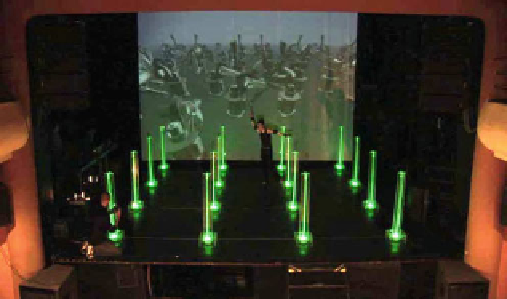Information Technology Reference
In-Depth Information
•
VRML profile would render the 3D scene in using the 3D geometry-related
“metadata”
•
Unreal profile would render the same scene in a more advanced environment of
the Unreal Engine
•
Media player profile would wait for video files in order to interpret the data by
playing the video
•
Timeline profile would wait for the list of all processes found in the ontology and,
based on this information, it would generate the nice-looking timeline widget
•
Graph profile would render the RDF graph and would highlight nodes within the
graph based on their activity
•
Subtitles profile would display subtitles added by the modeller for annotation
purposes
At the very end of the loading process, a slider widget (timeline controller) is
instantiated and configured. The end-user controls the whole visualisation tool from
the control panel of the slider widget synchronising the other components. In our
case, the synchronisation is achieved by sending small UDP packets to software
applications representing the selected visualisation profiles.
An example could be the synchronisation of multiple video players showing the
recorded video of the stage from different angles, at the same time rendering the 3D
scene based on the recorded motion capture data (see Figs.
22.14
,
22.15
and
22.16
).
More details can be found in an article ambitiously titled >>Long-term digital
preservation of a new media performance: “Can we re-perform it in 100 years?”<<
for May's issue of International Preservation News published by IFLA Core Activity
on Preservation and Conservation (PAC) group accessible at
http://www.ifla.org/
files/pac/IPN_47_web.pdf
Fig. 22.14
Still image from the original recording of the GOLEM performance

